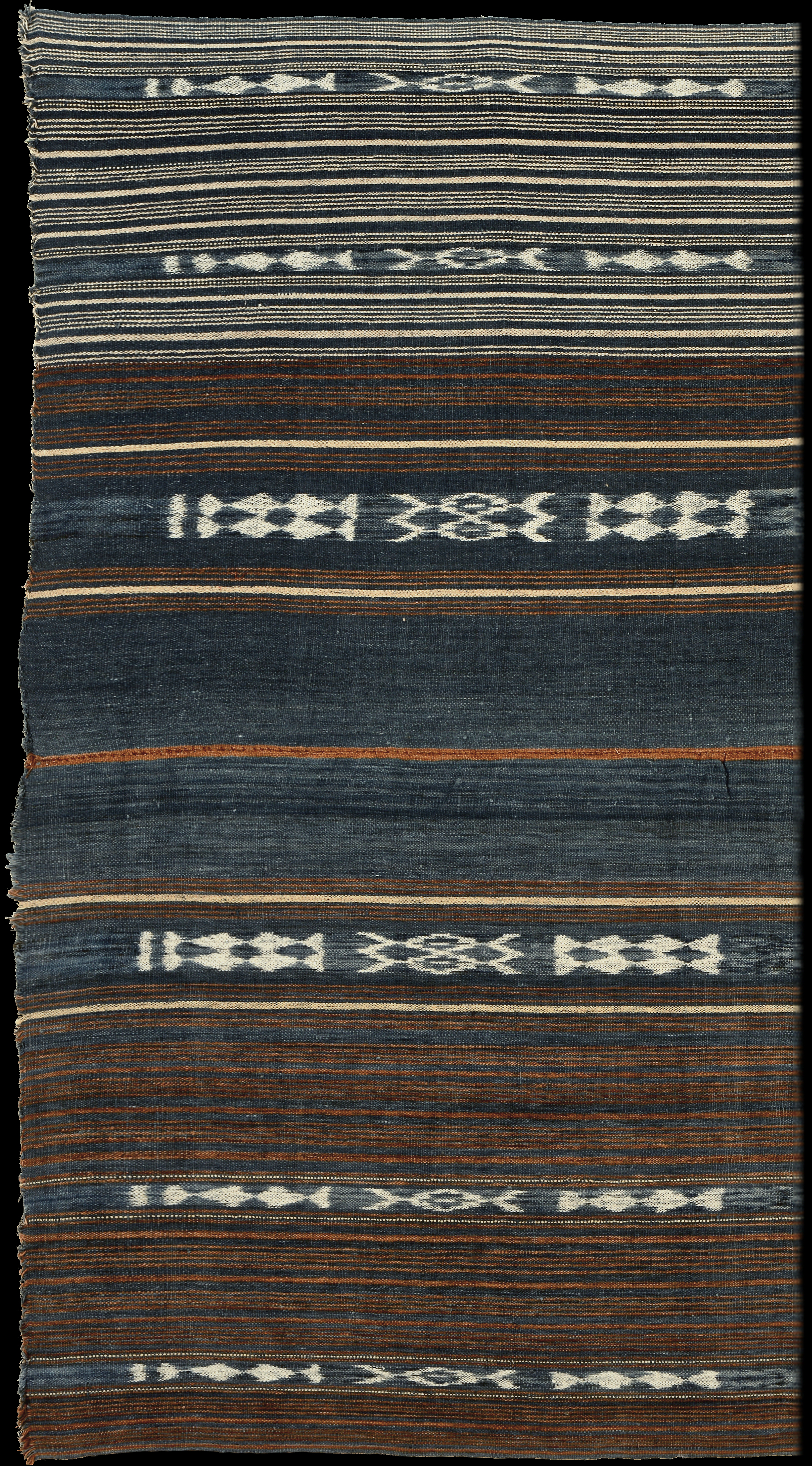| |
 mouse over to magnify mouse over to magnify
| | | | 264 Moluccas, Tanimbar
Bakan (sarong, cloth for)
| | Locale: | Probably from Sera or Larat. | | Period: | 1950 or before | | Panels: | 2 | | Design: | The two widest ikated bands carry double lizard motifs flanked on either side by double fish motifs. The second widest ikated bands carry the same motif, in single version. The weaver ikated eight narrow bands with fish motifs flanking a lizard motif. These were then distributed across the cloth to create two wide bands with a double row of motifs, set in a plain indigo field, one on each panel, and four narrower ikated bands that bring rhythm to the composition. Given the coarseness of the patterning a provenance from one of the smaller islands is most likely. | | Size: | 124 x 135 cm (48.8 x 53.1 in) | | Weight: | 535 g (320 g/m2) | | Yarn: | Cotton, hand-spun, coarse | | Comment: | Cloth for sarong, shown here folded over, to show it roughly as would the finished sarong. An intrigueing piece on account of the fact that, unlike most Tanimbar sarongs, it is not symmetrical. It may be a 'pagi-sore' sarong, with different top and bottom sections, the point of such a design being that the sarong could be worn with either half visible and the other folded over, so that it would appear as if the owner had two different sarongs. However, the asymmetry may also have been unplanned. it is possible that the weaver ran out of red/brown yarn and had to switch to white for the part that here ended up on top, and then decided to create something unusual. If both bottom and top panel were in the same colour and joined flipped, it would have been a tais matin / bakan mnanat. However, it may also have been a sarong for the dead. The only sarong for the dead that Van Vuuren ever saw had a red bottom panel. Ex collection J.B. Lüth. | | Background: | Additional information in chapters on Moluccas and Tanimbar. | | Published: | Ikat Textiles of the Indonesian Archipelago, 2018.
| | Compare: | 262 | | Sources: | Lizard motif in Van Vuuren, Ikat from Tanimbar, Fig. 57, p. 128. Fish motif, Fig. 3, 138, 138a., p. 134. Reflections on possible genesis of this atypical cloth and weaver's intentions based on Van Vuuren, personal communication, 2016. | | |
 ©Peter ten Hoopen, 2025
All rights reserved.
|
|


